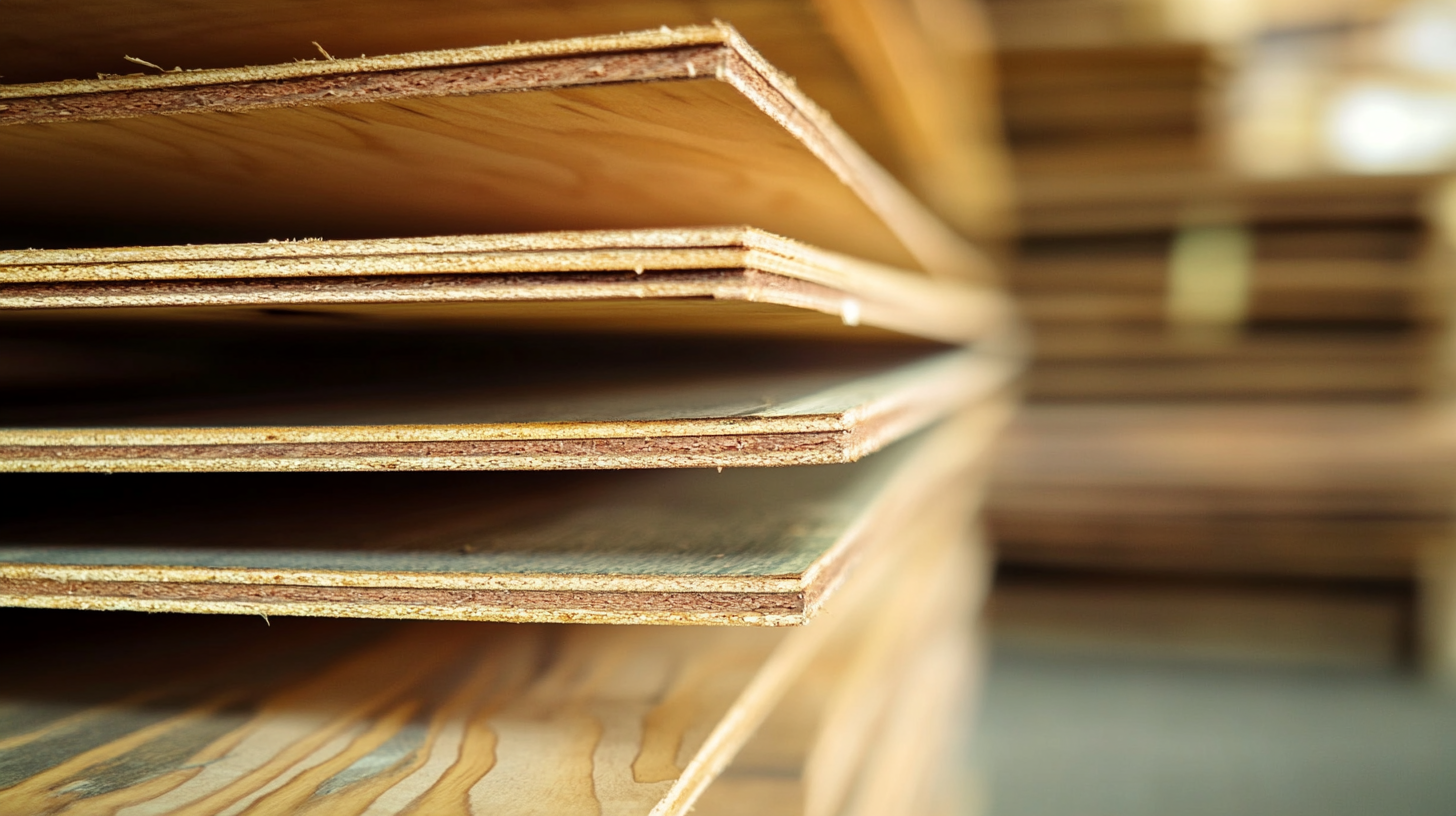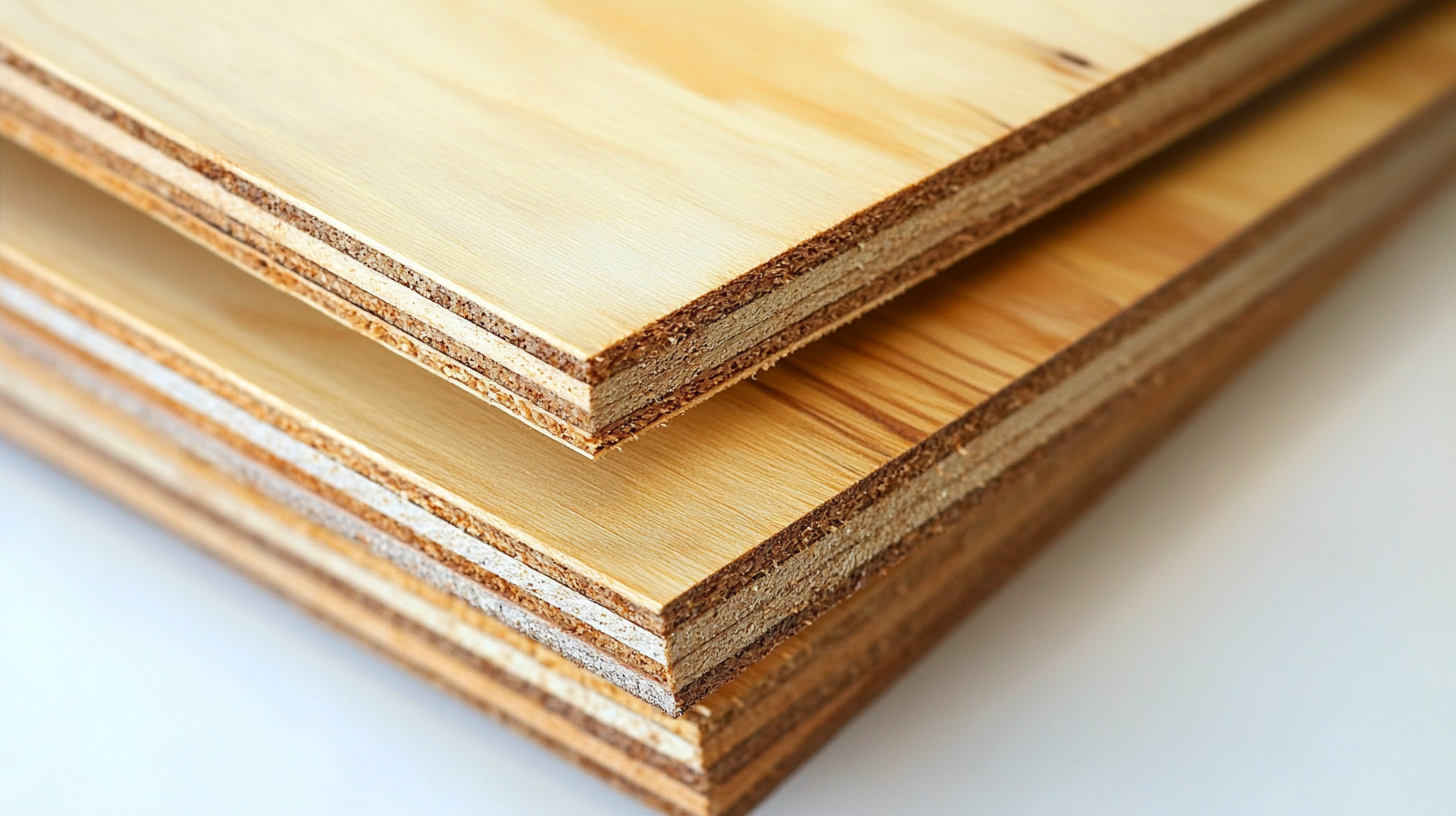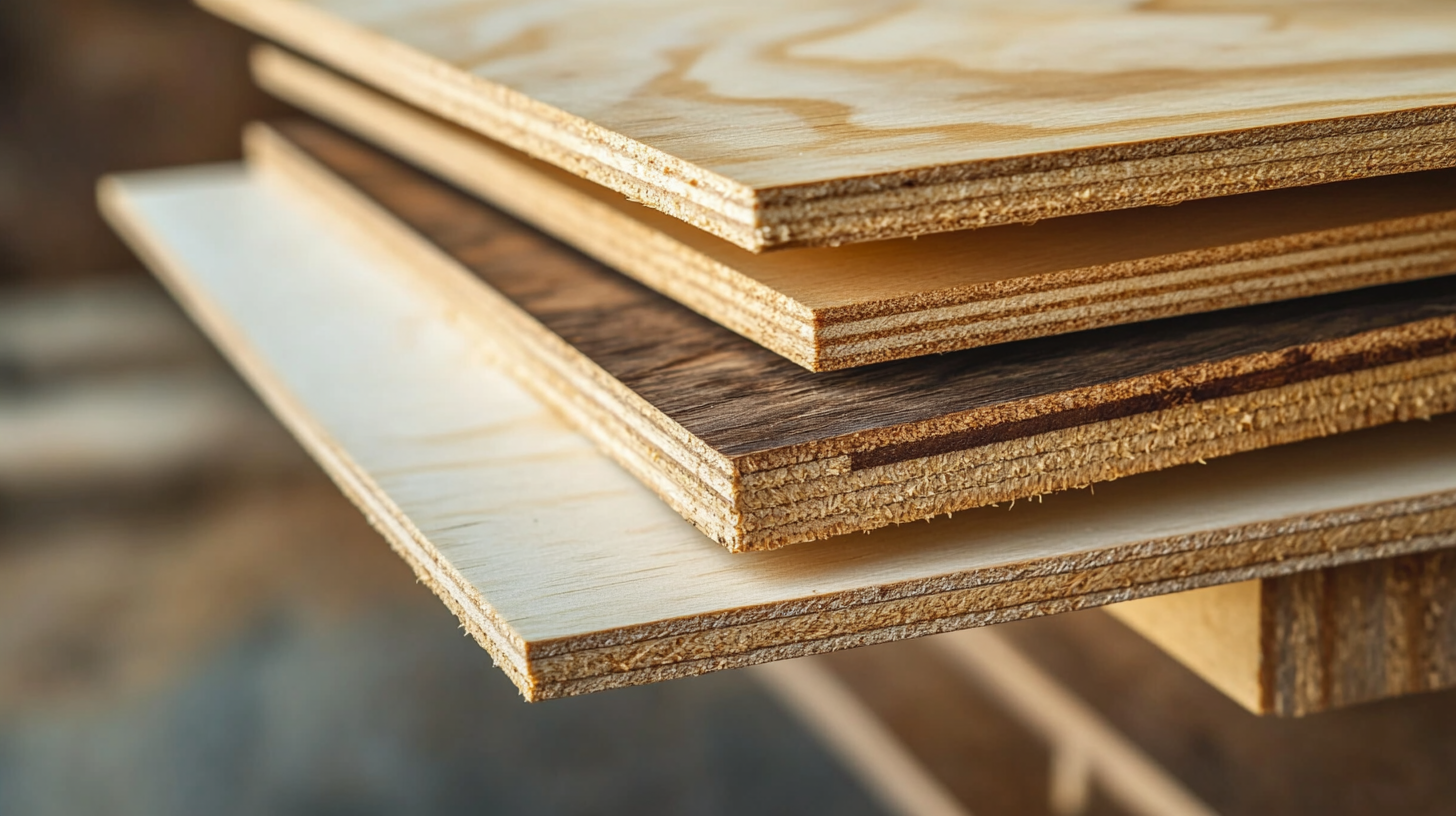As the construction and furniture industries continue to evolve, the demand for high-quality materials is at an all-time high. According to a recent market analysis, the global plywood market is projected to reach $75 billion by 2025, with premium plywood comprising a significant share due to its durability and aesthetic appeal. Premium plywood stands out not only for its strength and resistance to environmental factors but also for its versatility across various applications—from residential designs to commercial projects. As builders and architects increasingly prioritize sustainability and quality, opting for premium plywood has become a strategic choice. This blog will explore the myriad advantages of selecting the best premium plywood for your projects, backed by industry insights and expert recommendations, ensuring you make an informed decision that enhances both functionality and design.

When embarking on a project, understanding the core material you choose is paramount. Premium plywood stands out due to its superior quality and diverse applications. Defined as multi-layered wood glued together with grains alternating for strength, it boasts characteristics such as resistance to warping, cracking, and splitting. According to industry reports, premium plywood can have a higher density and greater durability than standard options, making it an ideal choice for both structural and aesthetic projects.
Moreover, investing in premium plywood can also have financial benefits beyond its durability and appearance. For instance, homes constructed or renovated using high-quality materials can experience lower insurance premiums. A recent analysis reveals that homes featuring well-constructed finishes, including premium plywood, can significantly reduce risks associated with property damage, thereby lessening insurance costs. This becomes increasingly important as homeowners look for ways to enhance both the quality of their living spaces and their financial sustainability. In this context, premium plywood not only enhances project outcomes but also contributes to overall household savings, making it a smart investment for any builder or renovator.

When it comes to construction projects, the choice of materials significantly influences both durability and aesthetics. Premium plywood stands out as a superior option for builders and designers alike, offering several key benefits. According to a report from the American Plywood Association, using high-quality plywood can enhance structural integrity by up to 30% compared to lower-grade alternatives. This increased strength is crucial for constructing safe and long-lasting structures, especially in areas exposed to severe weather conditions.
One of the primary advantages of premium plywood is its resistance to warping and splitting, which greatly reduces maintenance needs over time. A study published in the International Journal of Wood Products highlights that premium-grade plywood can last 20% longer than standard options under similar conditions. This longevity not only saves money on repairs and replacements but also supports sustainable building practices by reducing waste.
Tips: When selecting plywood for your projects, always check for certifications from reputable organizations, such as the Engineered Wood Association, which can assure you of the product's quality. Additionally, consider the intended use of the plywood; marine-grade plywood, for instance, is perfect for outdoor applications due to its waterproof qualities.
When embarking on a woodworking project, one of the crucial decisions you’ll face is choosing the right type of plywood. Premium plywood stands out against standard plywood due to its superior manufacturing process, which results in enhanced strength, durability, and aesthetic appeal. While standard plywood can serve well for basic needs, it often lacks the stability and finish that premium options provide, making it a less favorable choice for high-quality furniture or intricate designs.
Tips: When selecting plywood, always consider the grade and type of veneer that suits your project best. Premium plywood generally uses better-quality wood species, which not only improves appearance but also ensures that the material can withstand wear and tear over time. Additionally, check for voids and imperfections in standard plywood, as these flaws can weaken the structure and lead to complications later on.
Moreover, the cost difference reflects the value you gain from premium plywood. Beyond aesthetics, investing in premium options can save you time and money in the long run due to fewer repairs and replacements. Choosing the right plywood for your specific needs can enhance your project outcomes significantly and ensure longevity in your creations.
| Feature | Premium Plywood | Standard Plywood |
|---|---|---|
| Durability | High durability, resistant to warping and cracking | Moderate durability, prone to warping under extreme conditions |
| Finish Quality | Smooth finish, ideal for visible surfaces | Rougher finish, may require sanding |
| Moisture Resistance | Excellent moisture resistance, suitable for humid environments | Limited moisture resistance |
| Cost | Higher initial cost | Lower initial cost |
| Weight | Lightweight, easy to handle | Heavier, can be cumbersome |
| Sustainability | Often made from sustainably sourced materials | May not prioritize sustainable sourcing |
 When it comes to premium plywood, its applications span across various industries, demonstrating versatility and durability that meet specific project needs. In the construction sector, premium plywood is favored for its structured integrity, making it ideal for flooring, wall panels, and cabinetry. The combination of strength and lightweight properties allows builders to create robust structures without compromising on design aesthetics. Its resistance to warping and moisture makes it a perfect choice for both residential homes and commercial spaces that require long-lasting materials.
When it comes to premium plywood, its applications span across various industries, demonstrating versatility and durability that meet specific project needs. In the construction sector, premium plywood is favored for its structured integrity, making it ideal for flooring, wall panels, and cabinetry. The combination of strength and lightweight properties allows builders to create robust structures without compromising on design aesthetics. Its resistance to warping and moisture makes it a perfect choice for both residential homes and commercial spaces that require long-lasting materials.
In the furniture industry, premium plywood plays a crucial role in crafting high-quality pieces that appeal to consumers seeking sustainability and style. The ability to be easily shaped and finished allows designers to explore innovative designs while ensuring strength and stability. Additionally, industries involved in the production of decorative veneers are increasingly opting for premium plywood, as it provides an excellent base for aesthetics without sacrificing durability. As the demand for eco-friendly materials continues to rise, premium plywood is poised to remain a key player in various applications, highlighting its importance in modern manufacturing and construction practices.
When selecting premium plywood for your projects, it’s crucial to consider the specific needs of your endeavor. Premium plywood is not just about aesthetics; its quality significantly impacts durability and performance. According to industry studies, premium-grade plywood typically features fewer voids and is constructed using higher-quality veneers, leading to enhanced strength and resistance to warping. This makes it an excellent choice for high-end furniture, cabinetry, and structural applications where reliability is paramount.
Moreover, different types of plywood are designed to meet specific requirements. For instance, marine-grade plywood is treated to withstand moisture and is ideal for environments prone to humidity or water exposure, while birch plywood is favored for its fine grain and smooth surface, making it perfect for applications requiring a polished finish. Experts recommend thoroughly assessing your project requirements, including load-bearing capabilities and environmental factors, to ensure that you select the most suitable type of premium plywood. Making an informed choice not only enhances the longevity of your project but also guarantees superior craftsmanship.
